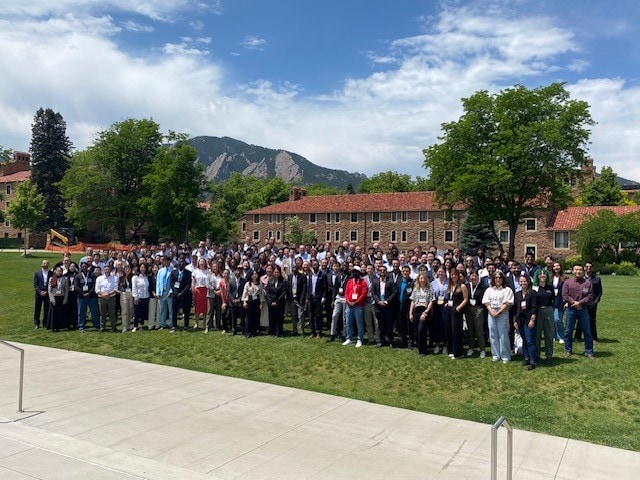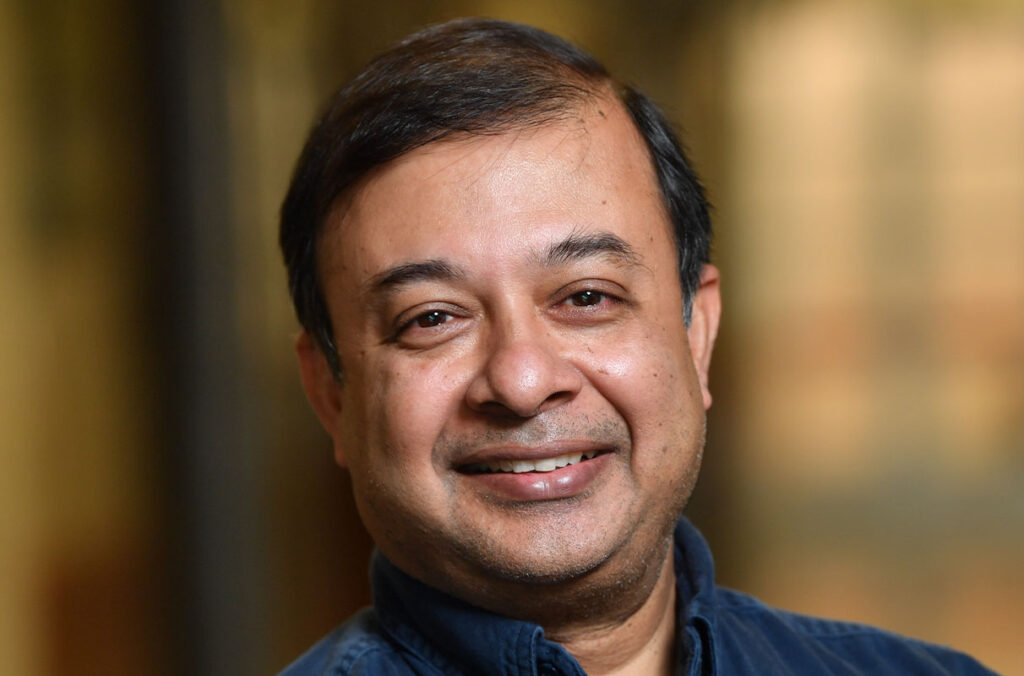
Introduction:
On Feb. 16, 2024, the Dept. of Mechanical and Materials Engineering at the University of Cincinnati had the privilege of hosting a distinguished speaker, Dr. Michael Sumption, a faculty member of Materials Science and Engineering Dept at the Ohio State University.
Seminar Topic: Nucleation and Growth of Oxide Nanoparticles in Internally Oxidized APC Nb3Sn Superconductors and influence on flux pinning
Seminar Overview:
Dr. Michael Sumption delivered an exceptional seminar talk, shedding light on the current advancements in type II superconductors including both A-15 and ceramics high-Tc superconductors, particularly focusing on creating high magnetic fields for tokamak and high-energy accelerators. His presentation provided invaluable insights into the potential applications of sustainable energy and fundamental research in high-energy physics, with a special emphasis on flux pining via engineered nano-scale precipitates.
Key Points Addressed:
Dr. Michael Sumption’s seminar talk on “Nucleation and Growth of Oxide Nanoparticles in Internally Oxidized APC Nb3Sn Superconductors and Influence on Flux Pinning” delved into the intricate processes underlying the development of high-performance APC Nb3Sn conductors. His discussion centered on the innovative use of internal oxidation to produce ZrO2 or HfO2 nanoparticles during the growth of Nb3Sn (A15), a technique that enhances both grain boundary flux pinning and acts as independent flux pinning centers.
Key points from the abstract were emphasized, including the impact of the relative solubility of Zr and oxygen in A15 and Nb-alloy on nanoparticle nucleation, and the resultant distribution of nano-oxides within the A15 layer. Dr. Sumption presented compelling SEM, TEM, and Atom probe results, complemented by a detailed analysis of nucleation and growth trends correlated with Nb-alloying elements and heat treatment times.
The seminar also highlighted the characterization of nanoparticle size and distribution through TEM image analysis, coupled with the development of a phase field model based on known thermodynamic and kinetic properties. Dr. Sumption’s discussion on transport results for ZrO2 and HfO2 APC variants, coupled with pinning analysis in relation to particle size and density, shed light on the evolution of flux pinning mechanisms.
Impact on MSE Graduate Students:
Dr. Michael Sumption’s seminar on the “Nucleation and Growth of Oxide Nanoparticles in Internally Oxidized APC Nb3Sn Superconductors and Influence on Flux Pinning” had a profound impact on the Materials Science and Engineering (MSE) graduate students, particularly in the realm of ceramic science and engineering research. His emphasis on the critical role of oxide nanoparticles in flux pinning mechanisms, including their size, distribution, and interactions with flux lines, sparked immense interest among the students.
The seminar shed light on the intricate processes by which internally oxidized APC Nb3Sn superconductors develop enhanced flux pinning capabilities through the presence of ZrO2 or HfO2 nanoparticles. Students were fascinated by the idea that these nanoparticles not only refine A15 grains but also directly act as flux pinning centers, influencing the superconductor’s performance.
Dr. Sumption’s detailed analysis of nanoparticle size trends, distribution patterns, and their impact on pinning mechanisms captivated the students’ attention. The discussion opened up new avenues of research interest within ceramic science and engineering, as students recognized the potential for exploring the synthesis, characterization, and applications of these fascinating electronic ceramics in high-Tc superconductors.
The seminar served as a catalyst for increasing students’ curiosity and engagement in ceramic materials research, highlighting the importance of understanding the fundamental properties of oxide nanoparticles in advanced materials. The concept of designing materials with tailored nanoparticle characteristics for specific flux pinning requirements resonated strongly with the aspiring MSE researchers.
The enthusiastic response was evident in the flurry of questions that followed Dr. Sumption’s presentation. Students eagerly sought clarification on nanoparticle growth mechanisms, the influence of different alloying elements, and the implications for superconducting performance. This interactive session not only deepened their understanding but also inspired them to consider innovative research avenues in the field of ceramic science and high-Tc superconductors.
Conclusion:
Overall, Dr. Sumption’s seminar left a lasting impact on MSE graduate students, igniting their passion for exploring the potential of oxide nanoparticles in flux pinning applications. It highlighted the exciting possibilities within ceramic science and engineering research, encouraging students to delve deeper into the world of advanced materials with newfound enthusiasm and curiosity.

Dr. Michael Sumption at seminar on Feb 16, 2024.

Dr. Michael Sumption with Dr. Donglu Shi and graduate students after seminar.

Dr. Michael Sumption with UC faculty at lunch on Feb 16, 2024.
Author
Vicki Evans
Spotlight Categories
- Section News
U.S. Sections
- Dayton/Cincinnati/Northern Kentucky


